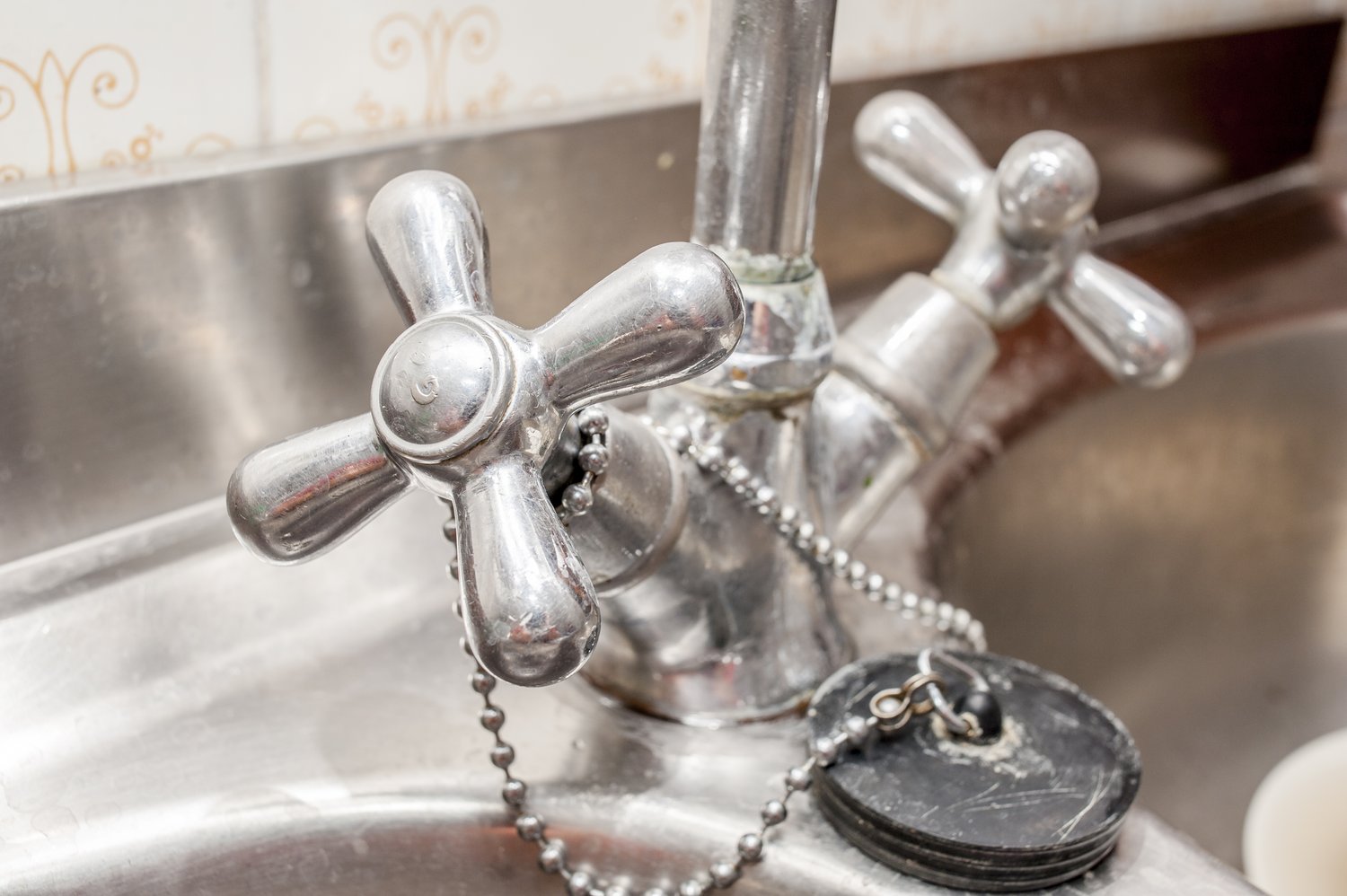Drip, drip, drip. It’s a sound that’s both annoying and costly, steadily increasing your water bill while wearing down your bathroom faucet over time. Understanding how to tackle a leaky faucet can save you money and prevents further damages, making this guide essential for every homeowner facing this issue.
- Explore common causes of bathroom faucet leaks to effectively address the root problem.
- Be prepared with a comprehensive checklist of tools and parts needed for a smooth repair process.
- Follow clear, step-by-step instructions designed to help you fix any bathroom faucet leaks efficiently.
- Learn preventative techniques to prolong the life of your faucet and avoid future leaks.
- Understand when it might be necessary to call in professional help for complex faucet issues.
By the end of this article, you’ll not only know how to repair a leaky faucet but also how to maintain it for peak performance. Dive in and discover how these practical solutions can simplify your home maintenance tasks, enhancing your confidence in DIY repairs.
Identifying the Cause of Bathroom Faucet Leaks: Complete Repair Guide
Understanding why your bathroom faucet leaks is a critical first step in addressing the problem effectively. Leaks can not only be annoying but also result in significant water wastage, which impacts your utility bills.
Several common reasons can lead to a bathroom faucet leaking:
Worn-Out Washers and O-Rings: Over time, the constant friction between the washer and valve seat can cause washers to wear out. Similarly, the O-rings can deteriorate due to regular use. These components often need replacing as part of your repair.
Corroded Valve Seat: The valve seat, connecting the faucet and spout, can corrode over time due to water sediments. This corrosion can lead to leakage from the spout.
Improper Installation: A misaligned faucet or improperly installed washers can cause leaks. Ensuring correct installation from the start can prevent such issues.
Loose Parts: Over time, parts of the faucet can become loose, causing leaks. Tightening or replacing these parts can resolve the issue.
By accurately identifying the source of the leak, you’ll be better prepared to repair your bathroom faucet, ensuring both efficient performance and savings. Let’s delve into the necessary tools and parts you’ll need for a successful repair.
Tools and Parts Checklist for Repairing Bathroom Faucet Leaks
Before starting your repair, equip yourself with the right tools and replacement parts. Having everything ready will streamline your repair process and help you avoid unnecessary interruptions.
Here’s a comprehensive checklist of what you’ll need:
- Adjustable Wrench: Essential for loosening and tightening nuts and bolts.
- Screwdrivers: Both flathead and Phillips screwdrivers are often required for removing faucet handles and other components.
- Pliers: Useful for gripping and holding small parts while you work.
- Replacement Washers and O-Rings: Ensure you have the correct size and type for your faucet model.
- Plumber’s Tape: Useful for sealing any threaded pipe connections, preventing wasteful leaks.
- Lubricant: Helps in loosening stubborn components and provides smooth rotation post-repair.
With these tools and parts at your disposal, you are in a strong position to tackle the repair with confidence. This preparation minimizes frustration and maximizes efficiency, so you can swiftly address any leaking bathroom faucet issues.
Step-by-Step Guide to Fixing Bathroom Faucet Leaks: Complete Repair Instructions
Repairing a leaky bathroom faucet might seem daunting, but with the right guidance, it can be a straightforward process. This detailed guide provides easy-to-follow steps to help you tackle any bathroom faucet leak effectively and efficiently.
Step 1: Turn Off the Water Supply
Before beginning any repairs, locate the water supply valves under the sink and turn them off. This will prevent water from causing further mess during the repair.
Step 2: Disassemble the Faucet
Carefully remove any decorative parts of the handle. Use a screwdriver to undo the handle screw. If your faucet has a cap, it might need to be pried off gently. Once the handle is removed, you will have access to the internal components.
Step 3: Identify the Type of Faucet
Different faucets require different methods of repair. Common types include compression, cartridge, ceramic disk, and ball faucets. Identifying your faucet type is crucial for purchasing the correct replacement parts.
Step 4: Replace Damaged Parts
Inspect the internal components for wear or damage. O-rings, washers, or cartridges commonly cause leaks. Replace these parts with exact matches or recommended replacements.
Step 5: Reassemble the Faucet
Once all necessary parts have been replaced, reassemble the faucet in the reverse order of disassembly. Ensure each piece is securely fastened to prevent new leaks.
Step 6: Test for Leaks
Turn the water supply back on and test the faucet. Look for any leaks around replaced components or the base of the faucet. Adjust and tighten if necessary.
Following these steps will ensure your bathroom faucet is repaired correctly and remains leak-free.
Preventative Measures to Avoid Future Bathroom Faucet Leaks
Regular maintenance and mindful use can significantly extend the life of your bathroom faucet. Here are practical preventative measures to keep leaks at bay:
Routine Inspection: Check your faucet periodically for any signs of wear, such as corrosion or loosening parts, which are often early indicators of potential leaks.
Gentle Handling: Avoid over-tightening handles as this can wear out components prematurely. Use a gentle touch to preserve the integrity of the internal parts.
Regular Cleaning: Mineral deposits can accumulate and cause blockages that lead to leaks. Clean your faucet with vinegar or a suitable cleaning solution to dissolve build-ups.
Avoid Harsh Chemicals: Elements like strong acids can erode the internal workings of a faucet. Use mild cleansers to maintain component integrity.
By implementing these preventative measures, you can ensure that your bathroom faucet stays in good condition, avoiding unexpected leaks and saving on repair costs.
When to Call a Professional for Bathroom Faucet Leaking? Complete Repair Guide Insights
Sometimes, even the most knowledgeable DIY enthusiasts reach a point where professional intervention is essential. Recognizing these moments can save you time, prevent further damage, and ensure the quality of the repair.
One of the common indicators that it might be time to call a professional is persistent leakage despite multiple repair attempts. If your efforts to stop the bathroom faucet leaking result in temporary solutions or heightened issues, expert hands might be necessary.
Another situation that calls for professional assistance is corrosion and mineral buildup in the faucet components. These issues can complicate the repair process and washing them out effectively may require special techniques and tools.
If your bathroom faucet is part of a more complex plumbing system, it might be wise to get a professional involved. Multifaceted systems, especially those integrated with smart home technologies, often require an expert’s touch to ensure all parts function harmoniously once repairs are made.
A crucial scenario for seeking professional help is when leaks are affecting the underlying plumbing structure. This may involve dealing with water pressure issues or repairing parts of the plumbing network that are not easily accessible. Experts have the knowledge and equipment to handle these complex underlying problems without causing additional issues.
In some cases, a bathroom faucet damaged beyond repair due to cracks or irreparable wear and tear needs professional evaluation. They can advise on suitable replacements that match your system’s requirements while providing guidance on installations to ensure future reliability.
Lastly, don’t hesitate to consult a professional if you’re short on time or lack the confidence in executing the repair effectively. A seasoned plumber can swiftly address the leaking faucet, freeing you from additional stress and allowing you to focus on other priorities.
Consider these insights carefully when deciding between a DIY repair and professional involvement. By making the right choice, you’ll achieve a lasting solution to your bathroom faucet woes.
Frequently Asked Questions About Repairing Bathroom Faucet Leaks
How can I tell if my bathroom faucet is leaking?
Look for consistent drips, water pooling around the faucet base, or unusual moisture under the sink.
What common tools do I need to repair a faucet leak?
- Adjustable wrench
- Screwdriver
- Plumber’s tape
- Replacement parts like washers or O-rings
How long does it typically take to fix a leaky faucet?
Repairing a leaky faucet usually takes about 30 minutes to an hour, depending on the issue.
Can I prevent faucet leaks in the future?
Yes, by regularly inspecting your faucet, replacing worn-out parts, and avoiding overtightening handles.
When should I consider calling a professional for a faucet leak?
If leaks persist after DIY repairs or if you’re unsure about the repair process, consider professional help.





